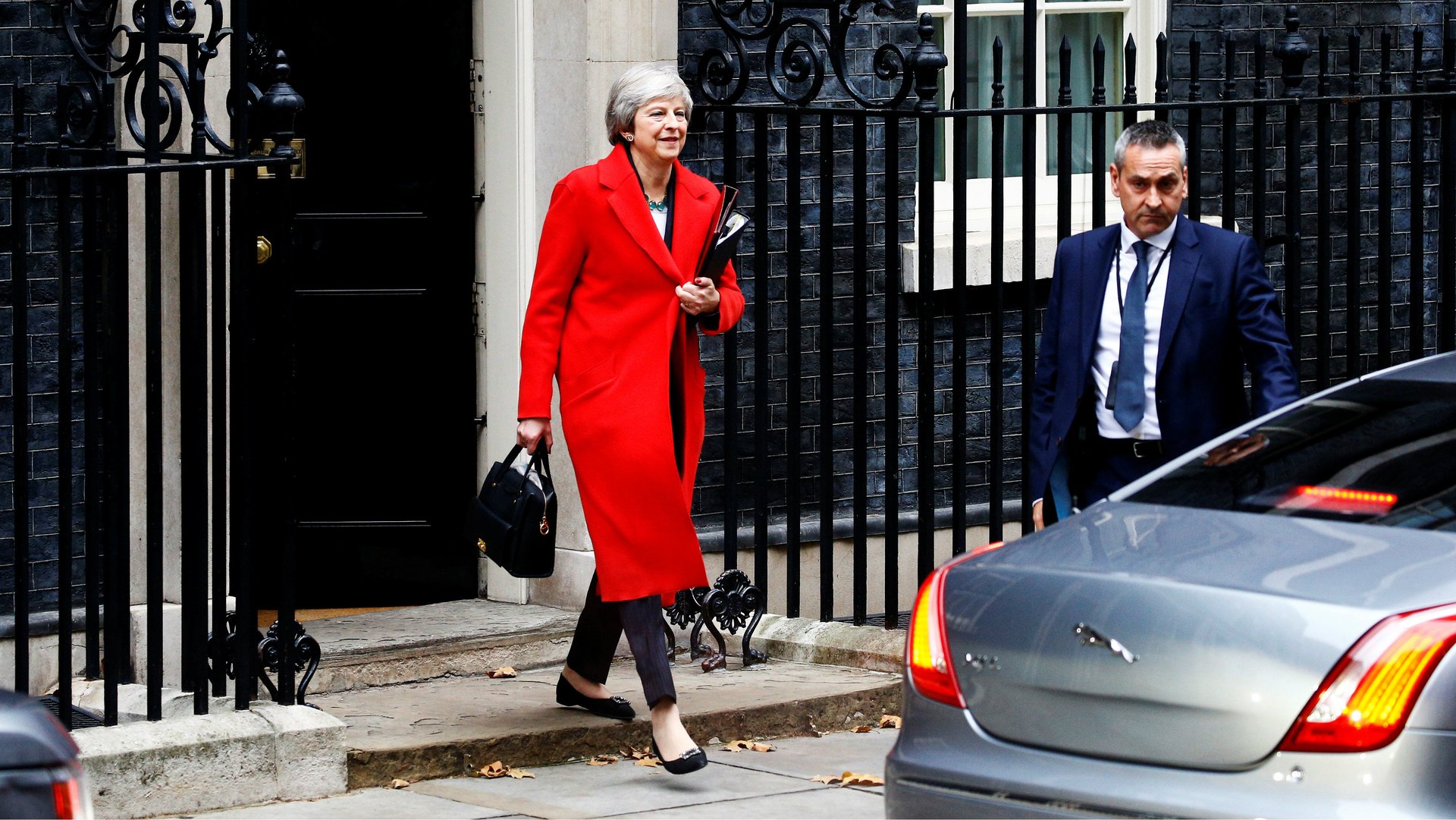“My deal, no deal, or no Brexit”: What Theresa May’s ultimatum means
In less than 24 hours, UK prime minister Theresa May has (barely) managed to persuade her divided cabinet to back a draft deal to exit the EU and weathered a slew of cabinet resignations. This morning, she addressed the House of Commons in a speech that laid out an ultimatum: It’s her deal, no deal, or no Brexit.


In less than 24 hours, UK prime minister Theresa May has (barely) managed to persuade her divided cabinet to back a draft deal to exit the EU and weathered a slew of cabinet resignations. This morning, she addressed the House of Commons in a speech that laid out an ultimatum: It’s her deal, no deal, or no Brexit.
May’s deal still has a ways to go before being accepted. First up is the EU, which will review the deal and meet Nov. 25 to finalize the draft. Then comes a vote in parliament, where May faces opposition from all sides, albeit for different reasons.
With so much ahead, here’s your guide to understanding what her ultimatum means.
Option 1: No deal
That the UK might leave the EU with no deal has always been an option, albeit a catastrophic one by many metrics. The UK government has been preparing for the prospect over the past few months, releasing a slew of white papers outlining how it intends to deal with everything from aviation treaties to pet passports should they crash out of the EU on March 29 and fall back on World Trade Organization agreements—or no agreements at all in some sectors.
This option is less a premeditated possibility—it describes what will happen if no deal is reached, or if a deal falls apart at the last minute.
Option 2: No Brexit
May’s inclusion of “no Brexit” was curious, given that she’s historically taken pains to avoid any suggestion the government might not honor the result of the 2016 referendum on whether or not to stay in the EU. As May said in response to a question from Liberal Democrat leader Vince Cable after her speech: “We are making no plans for no Brexit, because this government is going to deliver on the vote of the British people.”
Indeed, perhaps May’s mention of no Brexit is intended less as a beacon of hope for Remainers and more as a warning to Brexiteers who are mulling whether or not to vote on her deal in parliament. If the deal doesn’t make it through parliament, the prospect of a snap election and/or another referendum—all of which could raise the specter of Brexit being reversed—becomes more likely.
Option 3: May’s deal
This option is obviously May’s desired outcome. There is just one problem: The deal itself “has united arch-enemies of remain and leave,” as Guardian columnist Polly Toynbee notes.
That said, May seems to suggest that there is no alternative deal that might replace this one. And indeed, none of the cabinet members who have resigned from her party this morning in the aftermath of this deal seem to have any suggestion of what might replace it.